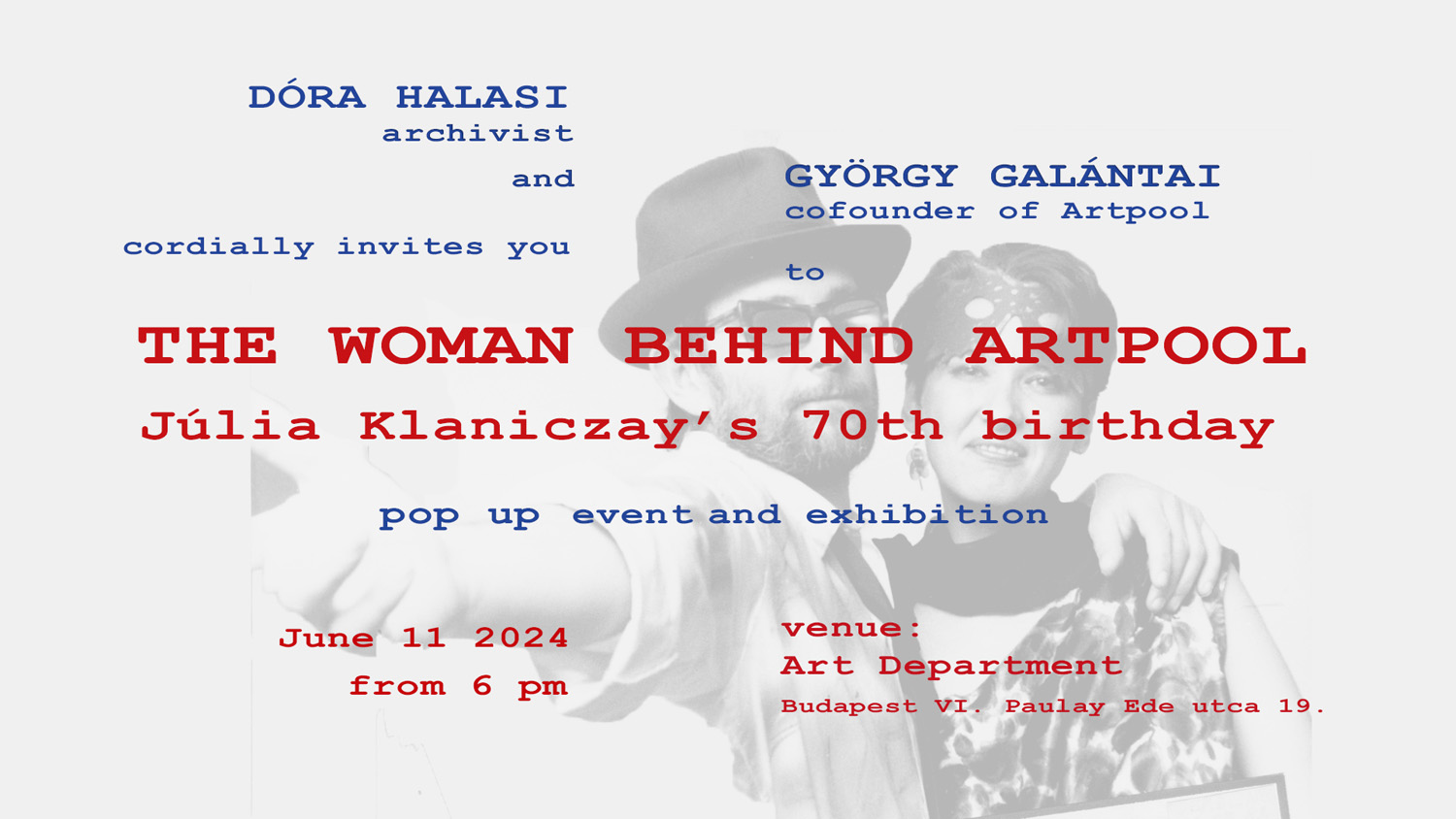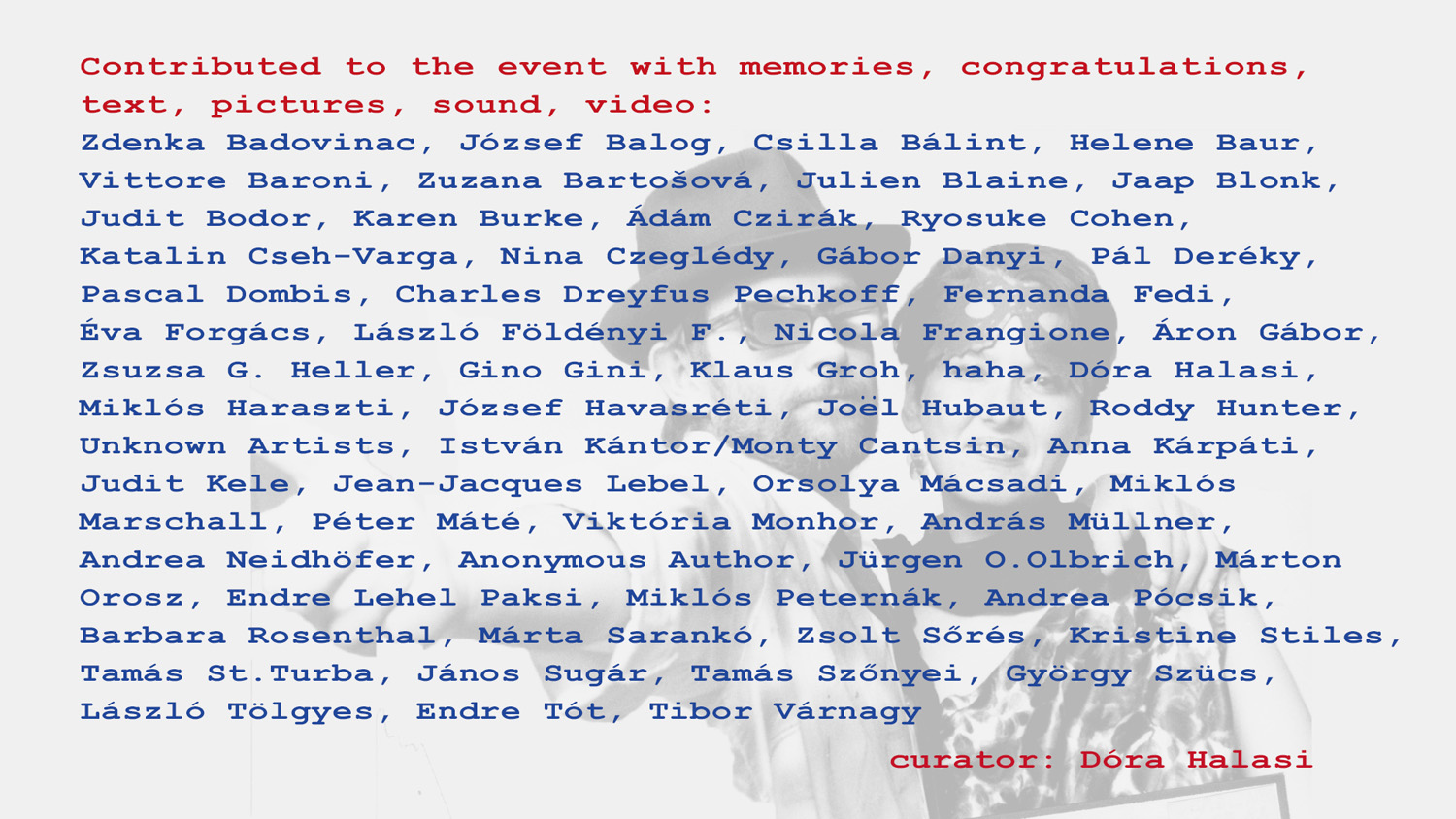THE WOMAN BEHIND ARTPOOL
Júlia Klaniczay's 70th birthday – pop up event and exhibition
11 June 2024, Art Department
Welcome speech by Dóra Halasi


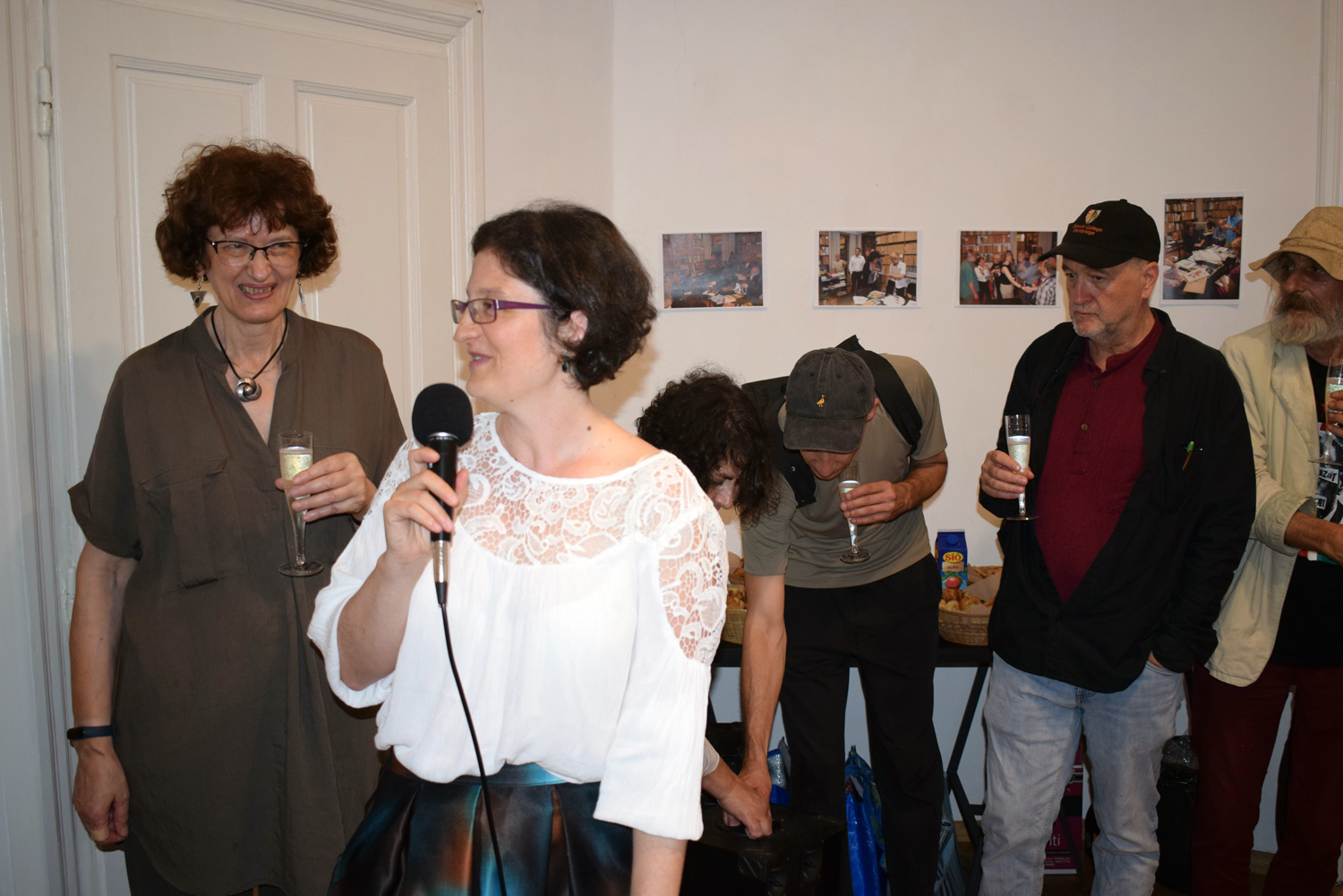


Welcome, everybody,
and thank you for coming today to join The Woman Behind Artpool – Júlia Klaniczay’s 70th Birthday event.
“If I sit by my desk and press my hands to my forehead, because behind it, as soon as I close the office gate behind me, immutable dwarf typewriters begin to rattle from left and right, bombarding the field of my attention, shrinking day by day, with tattered, unpleasant wrecks of sentences,
if a few sips of schnapps starts flowing in my nerve fibres, like electricity in a dust-ridden, ancient television set, and my completely numb brain begins to crackle and, freed from the unbearable hammering, the flickering of images start flooding my darkened retina, initially with expectant congestion, as in my childhood, and then with limping linear structures,
if no one speaks, the phone isn’t ringing intrusively, the radiator isn’t rattling, the loudspeaker isn’t calling for anyone to come, if the door of the elevator isn’t slammed with a thunder clap every minute, if the eternally diarrhoea-stricken pigeons aren’t scratching my windowsill and perishable shoes and their hesitant and lurking owners are not shuffling past my window,
if I oust from my memory, increasingly resembling a storage closet, the intrusive names of defence ministers waving their fists, official press spokespersons speaking less than hot air, mass murderers dozing in glass cages in courtrooms, quietly exchanged master spies, newly emerged leaders of the people who have their friends hanged, man-eating god-kings, as well as bubble-size prominents unveiling statues, cutting the first bread of the new harvest, inaugurating bridges, marching before the guard of honour, kissing the foreheads of girls waving flowers, wiring telegrams of greetings and distributing medals, and smiling into every room on the waves of cathode rays,
if, in the evening before, I take my usual quiet walk along the mountainside with my wife, if I have paid the rent, the electricity and telephone bills and there was money left over for milk, meat, apples, coffee, tobacco and wine, if I succeeded in sleeping through the night like a log, and if, thrown to the sink by the explosion of the alarm clock, I have performed the rituals, punctuated by the dissipating morning thoughts, in a timely manner, and, with the fresh steam of coffee in my head, grab a seat at the bus window and closed in-between the smoke-, rain- and kitchen-smelling coats of my fellow human beings,
then, my God, this day will be no different than any other.”
(excerpt from The Visitor (1969), a novel by György Konrád)
For Júlia Klaniczay and her generation, György Konrád’s novel The Visitor (1969) provided the sociography of their time. Born a few generations later, I first encountered this work in 1998, when, working in the studio of the József Attila Theatre, we were practicing various breathing and speech techniques from Imre Montágh’s book The Craft of Language. The Art of Speech with actress Anna Fehér as our mentor. We were both born in the town of Berettyóújfalu, and, due to my age, I never had the chance to belong to the generation of the democratic opposition, but documents about this era turn up in the archives from time to time, during my studies and in my work as an archivist.
This February, when I was asked if I wanted to oversee the project The Woman Behind Artpool (since, as the oldest staff member of Artpool, I know Juli the best) I had no idea of the eventful series of events that was going to start…
I started sending e-mails to artists and art historians, asking them to share their thoughts on their ties with Júlia Klaniczay. This could be done in text, video or a visual piece. The pop-up exhibition you can see here displays the works that were contributed to this call. The exhibited documents, videos, texts and artworks will not only help you to find out more about Júlia Klaniczay’s person but they have also become primary sources in researching Artpool’s history.
The exhibition is structured along a timeline, from right to left (or left to right, depending on where you are standing).
The videos in the different rooms provide guidelines and set the timeframe (early years – 1970s-80s // exhibitions, cooperations – 1980s-90s-2000s // researchers, summary videos, mainly from the 1980s to 2000-2010).
You can also see a selection of photos by György Galántai on the walls, based on which you can form a picture of who Júlia Klaniczay was and has been associating with, which parts of the world she has been to, and things like that. All the photos have one common denominator: Artpool. Everything that can be seen on these walls and in this space has been for Artpool.
Many people shared their thoughts about Juli and Artpool in text form. These texts are all collected in a folder, which you can find and read in the room to my right. Due to Júlia Klaniczay speaking several foreign languages (English, French and Italian), it was important for me already in sending out the invitations to address the international artists in one of these languages. They submitted their contributions in the respective language in which Juli communicated with them.
There are two audio projects, which I encourage you to listen to. Put on the hat, and you will hear haha (the sounds and noises of Peter Haining baking a pie). Put on the headphones and listen to the music László Tölgyes made for this special occasion.
In 2011, I made a video with László Rajk on György Galántai’s 70th birthday. Now, in 2024, Júlia Klaniczay’s 70th birthday event has been realised in the same house.
The female background for this was provided by Judit Rajk, for which I want to thank her.
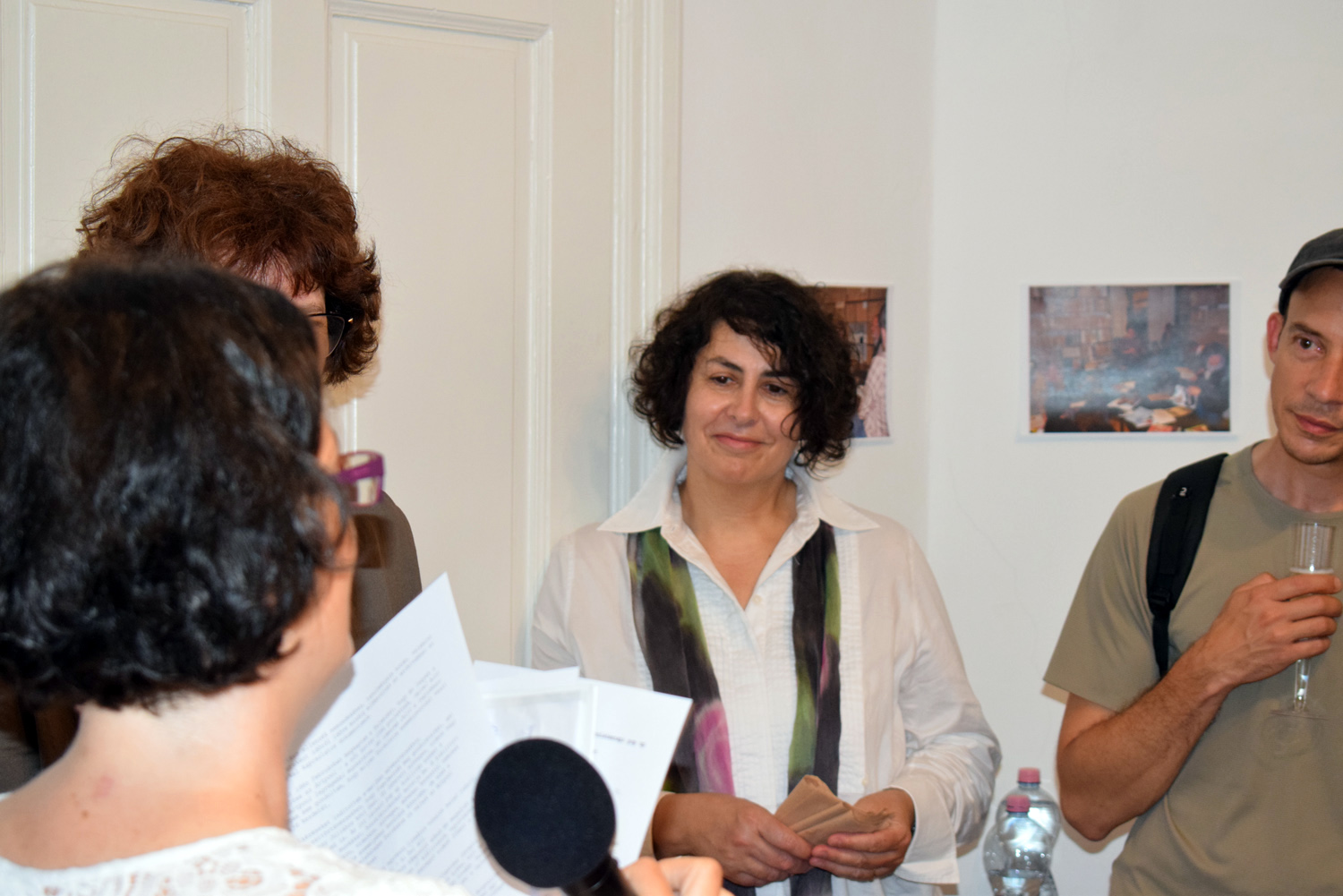
I’d like to thank György Galántai, whose professional advice and ideas greatly contributed to the visual realisation of the exhibition, and without whom today’s exhibition could not have gone online.
Let me take a step back: a human life is intricate, extends to all, and cannot be told just like that. I started working on the project in February, so this exhibition, which is now ready, can be a starting point for something new, and I trust that it will help research into the history of Artpool (as an active archive and an art research centre).
Happy birthday.
Be our guests for a drink, and we are happy to do a guided tour, if time allows it today.
And now, over to you, Juli.
Dóra Halasi
Budapest, 11 June 2024
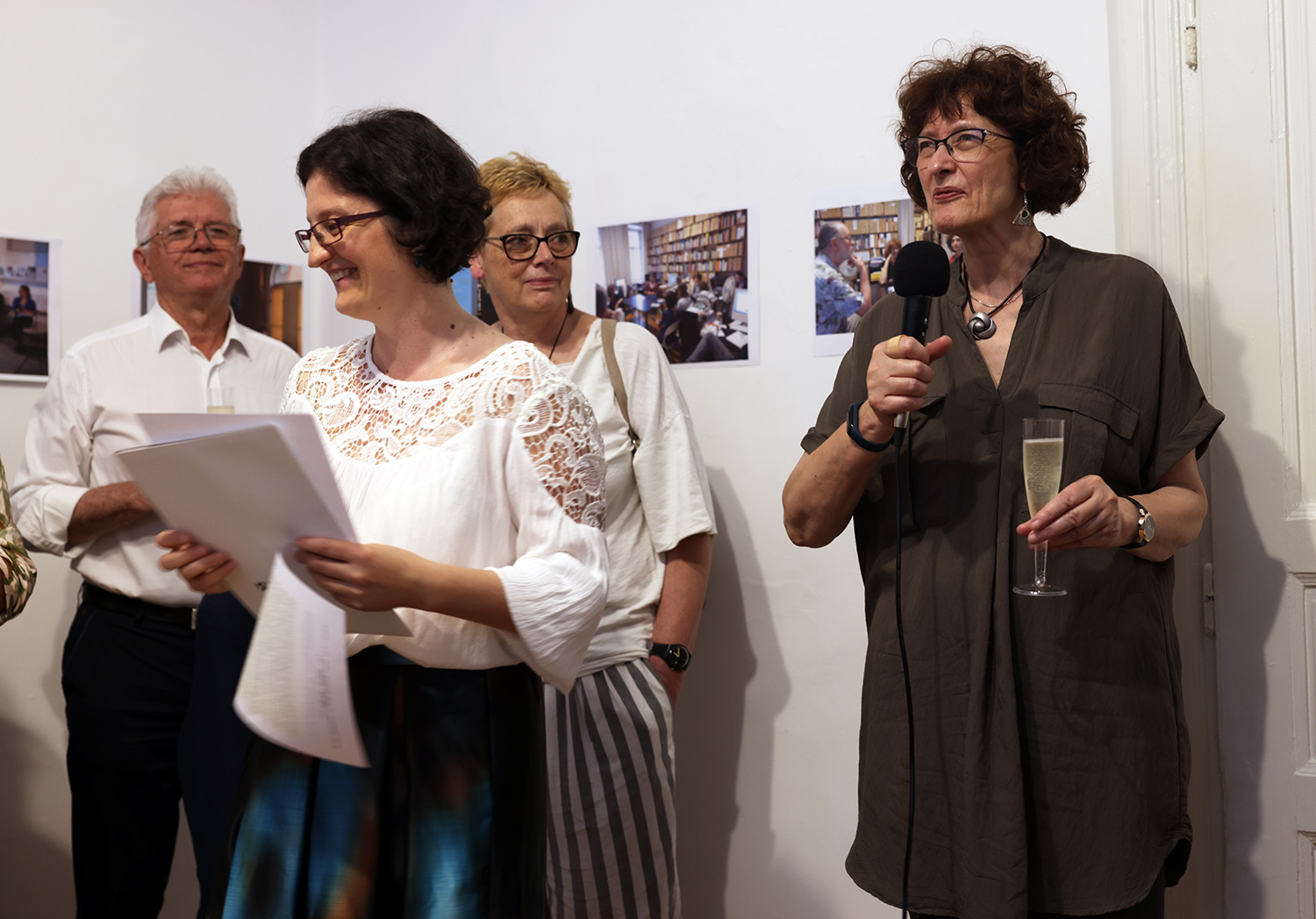
Check out the photo documentation of the exhibition and the texts, artworks, and videos sent to Júlia Klaniczay for her 70th birthday here.
